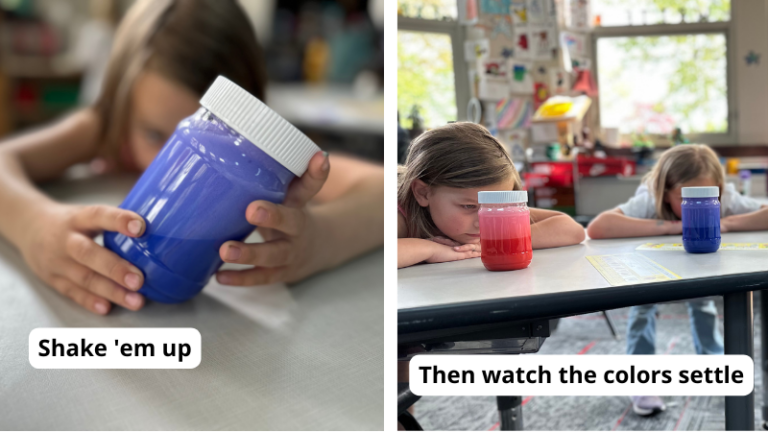Social-emotional skills like identifying and regulating feelings, kindness, sharing, and empathy are all skills that kids learn in early childhood, that have a huge impact on later success. In fact, one study found that the social-emotional skills that kids have in kindergarten correlated with success in early adulthood. Here are some of our favorite social-emotional learning activities to use with your preschool and kindergarten students.
1. Daily greetings

Daily greeting routines build community and confidence. They can also be used as a social-emotional learning check in. Use this daily greeting printable to give students ideas for how they can greet you. Use the ideas on this printable, or create your own with your class.
Learn more: Classroom Greeting Sign
2. Hang a feelings poster
Having a poster that shows and names feelings helps students learn feelings vocabulary. Prompt students to use the feelings poster when they are not sure exactly how they feel.
3. Talk about feelings in morning meeting

Morning meeting is a great time to have routines around naming and talking about feelings. How do you feel today? Why do you feel that way? Use the feelings chart to start naming feelings, and have students share what’s making them feel that way. As you start the year, give students a few options (happy, sad, angry) and then expand their options as they learn more feeling words.
Learn more: Feelings Bundle
4. Feelings thermometer
Draw a thermometer and label the top red (angry), the middle orange (overwhelmed, frustrated), yellow (worried, anxious, confused), green (sad, disappointed), and the bottom blue (calm, content, happy). First, help students identify where they are on the thermometer. Then, teach students strategies to apply when they are feeling red, orange, yellow, green or blue.
5. Read about social-emotional skills
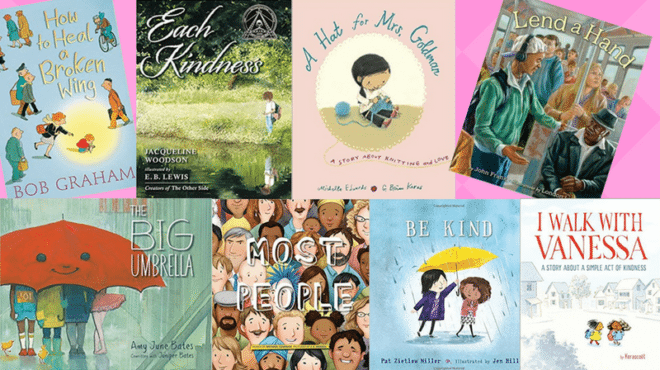
There are TONS of children’s books featuring interesting main characters and story lines that teach social-emotional skills, like empathy and sharing. Reading about characters they can relate to, in situations they can relate to, helps young children understand how different situations make us feel and how to handle each.
Learn more: Best Social Skill Books
6. Use real faces
Create a slideshow with faces of your students making different emotions or of photos of kids making feelings faces. Use these slides to identify how students feel each day until they’ve internalized the vocabulary. You can also take photos of students’ bodies in each feeling to talk about how each emotion impacts our whole body.
7. Play an emotions match game
Make emotions matching game cards by printing out emotion faces (could be of your students, emojis, or silly faces). Print two of each emotion, make sure all the cards are equal sized, and cut them out so you have pairs that you can turn over and play memory with. Play a standard game of memory, or pass out the cards and have students find the person who has their same emotion.
8. Make emotion masks
Make emotion masks using paper plates, markers and other materials. Glue popsicle sticks onto the back and place the masks by your read aloud chair. When you get to an emotional part of a read aloud, ask students to identify the character’s feeling and choose the appropriate mask.
9. Emotion mask match
Draw feelings onto paper plates. Then cut each paper plate in half so you have a set of tops and bottoms. Have students work to match the top and bottom of different feeling faces.
10. Draw helping hands
Talk about how our hands can help others. Then, students trace their own hands and reflect on what their helpful hands can do. They can draw a picture of what their hands can do and create a class bulletin board. Over the next weeks, take photos of students helping and add them to the bulletin board.
11. Daily yoga
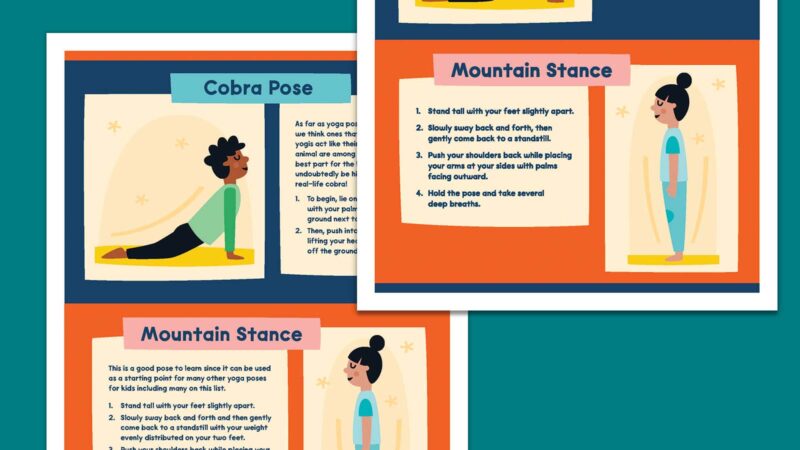
Yoga is a great way to help students come back to their body and breath after they’ve gotten upset. Practice yoga poses every day during morning meeting to help students get calm and ready for the day.
Learn more: Fun and easy yoga poses
12. Do an emotions sort
Print out pictures of emotions, either the basic emotions or the basics plus more (anxious, disgusted, afraid, etc). Print images that could go with each emotion. You could print a picture of a spider to go with “afraid” or a birthday cake to go wiht “happy.” Have students sort the pictures with the emotions. How does each picture make them feel?
13. Play feelings tower
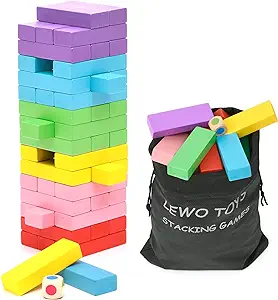
Draw feelings faces or write feelings words on blocks. Then, put the blocks in a tower and pull one block at a time. Ask students to share a time they felt the feeling that is on their block. Or, use a multicolored tower (above) and assign each color feeling (yellow is happy, blue is sad, etc).
Buy it: Wooden stacking blocks game
14. Emotions collage
Bring in magazines or printed out images for students to review and cut out. Choose one feeling and have students find the pictures that make them feel that way. They cut those images out and post them onto a group or individual collage. After a week you have collages that show what makes you happy, sad, angry, and any other feelings that your students are working through. This activity helps students label feelings, understand what impacts their feelings, and helps them see that we all respond differently-pizza might make some person excited, while another person feels disgusted.
16. Feelings songs
Use songs to reinforce feelings. Sing-along-songs like this one from The Singing Walrus are great for introducing feelings vocabulary.
17. Make a feeling spinner
Handout white paper plates, and have students draw eight circles around the edge. Then, they give each face a feeling (happy, sad, angry, tired, surprised, afraid, hungry, excited, calm). Once the faces are complete, create a spinner using a brad and arrow. Students point the arrow at the face that represents how they’re feeling today. This is also good to use with students who would rather point to how they feel than talk about it.
18. Play a round of feelings charades
Prepare a set of note cards with feeling words and pictures. Then, play charades. Students act out an emotion and the class guesses the feeling.
19. Make affirmation bracelets
Set out cups of colored beads. In front of each cup of beads, add a sticky note with a positive affirmation. For example, red may be “I can do this,” orange is “I am smart,” yellow “I am special.” Have each student make a rainbow bracelet with pipe cleaners and beads. Remind them to use their positive affirmations throughout the day when they touch the red bead and tell themselves they can do it!
20. Use I-statements
Encourage students to be mindful about how they’re feeling by helping them practice how to articulate their thoughts without lashing out at others. Give them starters such as “I feel angry when …,” “I feel happy when …,” “I feel frustrated when …,” etc. Once they are able to articulate their feelings, help them strategize ways to handle their feelings.
21. Use strategy cards
Use notecards and binder rings to create booklets about how to tackle hard feelings. Put calm down strategies on each card, things like “take 10 deep breaths” or “listen to music.” When students are feeling stressed or upset, they can take a booklet and flip through it to choose the strategy they want to use.
Use these posters to teach kids what to do when they feel their emotions escalating. Once they are familiar with the strategies, post the posters in your calm-down corner for kids to reference as they regroup. Included with the downloads are 30 great calm-down ideas like “I can count to 10,” “I can blow a feather,” and more.
22. Stomp out dinosaur-size feelings
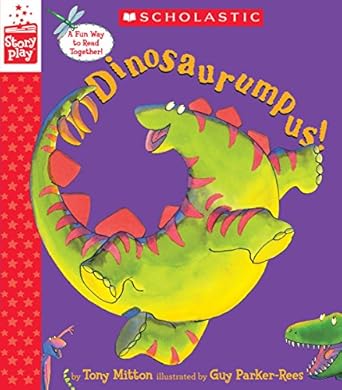
Read Tony Mitton’s charming story Dinosaurumpus aloud. Then, have students make a rumpus of their own by roaring, shaking, and stomping out their feelings.
23. Make calm-down jars
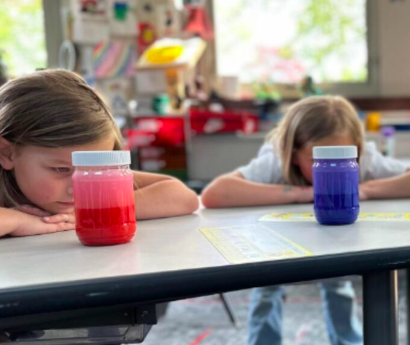
Make these mesmerizing calm-down jars for your classroom using just water, oil, and food coloring. Add glitter for a little extra pizzazz. When students are feeling overwhelmed or upset, give them a few minutes to focus on the jar as they turn it upside down and back. Focusing on the movement and colors will help students calm down so they can get back to work.
Learn more: DIY Calm Down Jars
24. Create a calm-down corner
Use a pop-up tent with pillows, or a bean bags in a corner with books. Whatever is in your calm down corner should help students come down from feeling upset and either alleviate or prevent the behavior that comes when students are processing a lot of emotions.
Learn more: How to Create and Use a Calm-Down Corner
25. Practice breathing techniques
Deep breathing reduces stress and anxiety and helps kids learn to manage their emotions. Use breathing breaks, like rainbow relaxation, to help students use breathing in an age-appropriate way.
26. Teach coping strategies
In any social situation, conflict will happen. Teach students what to do beforehand with strategies, like Saying “stop, ignoring the behavior, walking away, and getting help.
27. Make a rainbow road
Label six colored sheets of paper with statements like “I feel ___ (sad, happy, angry, frustrated, etc.) when ____.” Tape the sheets on the floor to create a rainbow road. To play, have a student roll a die, then count and walk to that number sheet. Help them read their statement and then have them fill in the last blank.
28. Create a culture of kindness
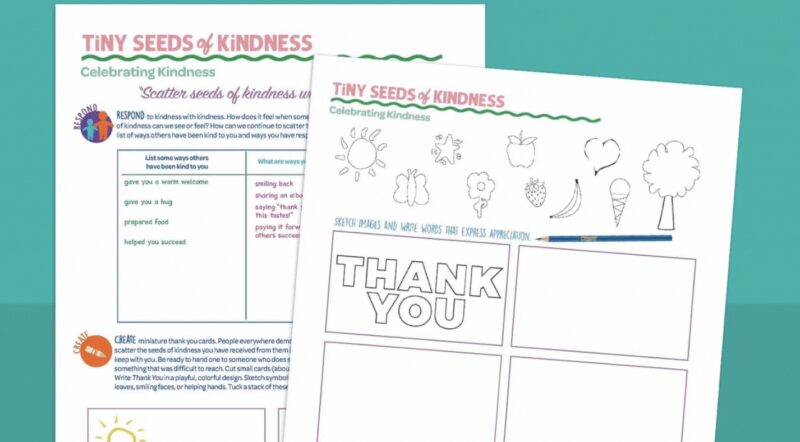
Talk about kindness and catch students being kind. Use these worksheets to plant seeds of kindness, express gratitude, or paint rocks for a kindness rock garden.
Learn more: Kind to the Core Worksheets
29. Read about kindness
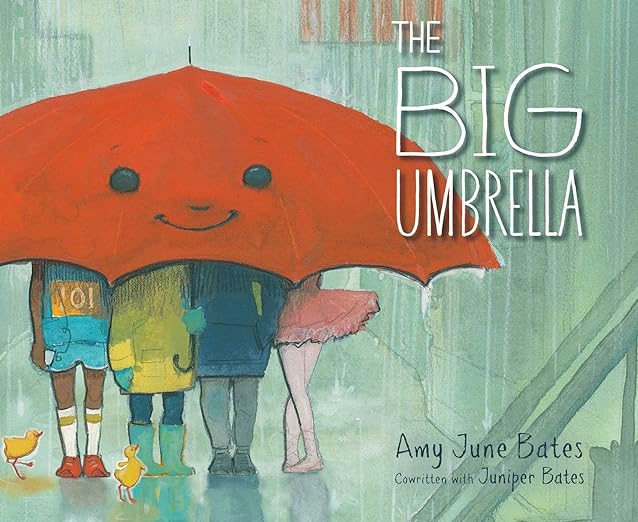
Keep kindness in the read aloud rotation with books about kindness, like The Red Umbrella, a story that preschoolers and kindergarteners can understand about kindness and inclusion.
Learn more: Best Kindness Books for Kids
Buy it: The Big Umbrella
30. Fill a bucket

Another book that prekindergarten and kindergarten students can understand is Have You Filled a Bucket Today? Use this book, and a set of buckets and pom-poms representing positive comments, to encourage students to fill each others’ buckets with kind words and deeds.
Buy it: Have you Filled a Bucket Today?
31. Make kindness trees
Draw a large tree trunk on a sheet of chart paper. Then pass out different-colored leaves made from construction paper and ask each student to write or draw an act of kindness they can do on their leaf. After they’ve finished, help them tape their leaf to the tree trunk as reminders of how they can show kindness and respect for others. Add more leaves to the tree as you notice students being kind.
32. Kindness BINGO
Create a BINGO card and write or take pictures of different ways that students are kind. Then, play kindness BINGO. This is a great wrap up activity for a unit on friendship or kindness. Take photos of your students demonstrating kindness and create a BINGO card that’s personalized to your class.
33. Hold a compliment circle
Have students sit in a circle with their legs out so that everyone’s feet are in the circle. Ask for a volunteer or start the circle. The first person says a complement for a peer. The peer says, Thank you! and pulls their legs in so they are sitting criss-cross-applesauce. Then, they give the next complement. The complement circle continues until everyone has received a complement and is sitting criss-cross-applesauce. 29. Play games
34. Practice sharing
Sharing is one of those skills that can be really hard for kids to develop. Practice the idea of sharing by making paper ice cream “cones” and passing the “ice cream” (a light-weight ball that will fit in the cone) from one person to another. As students share their ice cream, have them practice saying please and thank you.
35. Partner share
Teach students how to share with a partner. They can use stuffed animals to hold while they listen, or have a pencil or another tool to pass back and forth. Model listening and responding before having students share, and make sure you’re watching them to see where you can give feedback.
36. Use conversation starters
Get the conversation started with questions like “What is your favorite thing to eat at lunch?,” “What was the funniest thing that happened to you today?,” and the like. Be sure the questions are open-ended to avoid getting short yes or no answers.
Learn more: 200 Morning Meeting Questions
37. Teach whole body listening
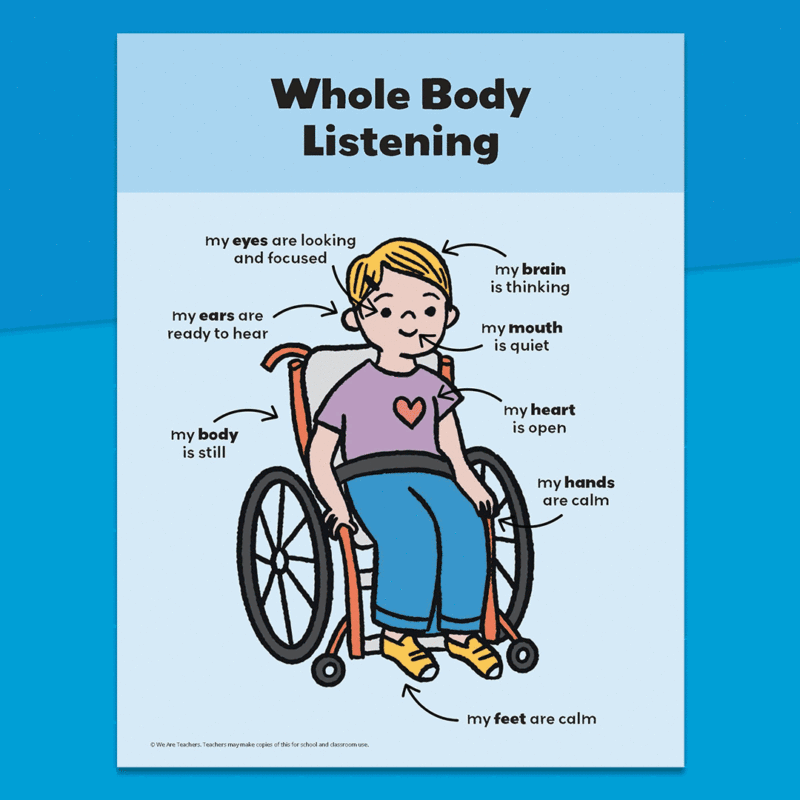
Teach students what their bodies should look like when they are listening. Use these whole body listening posters to reinforce this skill.
Learn more: 10 Ways to Teach Whole Body Listening
38. Improve listening skills
Learning to listen, not only to themselves but to one another, is a critical skill for preschoolers. Set aside time each day to sit quietly with your students and listen for sounds in and around the classroom for increasing lengths of time. Or ring a chime and ask students to see how long they can hear the sound it makes. Being able to signal your students when it is time to listen, and having them respond appropriately, is critical for creating a classroom environment that supports learning.
39. Play listening games
Practice listening skills with a game. Simon Says, Telephone, or Freeze Dance are all great games to get listening ears sharp. You can also use online listening games, like this one from the Zen Den.
40. Musical Feelings
First, write or draw feelings on notecards. Place the notecards in a circle. Play music and have students move around the circle until the music stops. When the music stops, they must stand by an emotion card and show that emotion with their body.
41. Rehearse with role-play
Role-play is a wonderful way to teach your preschoolers and kindergartners social behaviors, rules, and expectations. Rehearsing these skills in a safe space, with a teacher’s guidance, helps them learn social norms. Pretend how to act in a restaurant, assembly, or in other spaces they’ll need practice with. Or, practice how to handle situations that kindergarteners will come across, like not wanting to share a toy or asking someone for help.
42. Use social stories
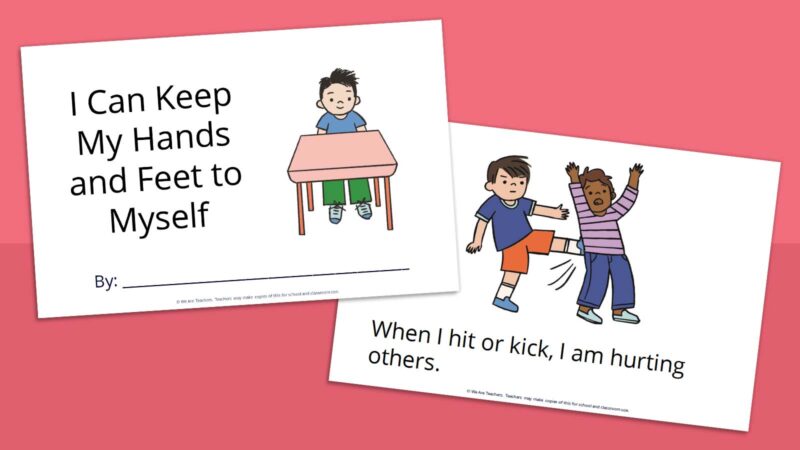
Learn more: Get 10 Social Story Printables
43. Play with puppets
Use puppets to model behavior you want to see, or to demonstrate non-examples. Puppets turn instruction into play in an effective way.
44. Watch friendship videos
Learning to get along with others takes a lot of practice. A video can be a conversation starter for students, or a way to talk about how to handle tough friendship situations.
Learn more: 30 Friendship Videos to Teach Kindness and Compassion
45. Friendship bracelet
Cut strips of construction paper and have students write a note to a friend on one side. Make sure that everyone has a friendship bracelet to put on, and have students pass them out. They can decorate the other side and wear them.
46. Read poems about friendship
As young children learn about different ways we express ourselves, use poetry to talk about friendship. After you’ve read poems about friendship together, write a class poem or challenge older kindergarteners to write their own friendship poem.
Learn more: Poems about Friendship
47. Add friendship songs to morning meeting
Listen to friendship songs, and talk about what they mean. What does it mean when Woody sings, “you’ve got a friend in me?” Or, when the Beatles sing they “get by” with a little help from their friends?
Learn more: Fantastic Friendship Songs
48. Create friend paper dolls
Have students think about what kind of friend they want, and want to be, by creating friend paper dolls. Draw an outline of a person on paper and give one to each student. Students decorate their “friend” and then share what they included. Does their friend have a pet to take care of together? Or, does their friend like gymnastics, just like them?
49. Build problem solving skills
As your students engage in play and collaboration, conflict will occur. When it does, help them solve their problems by observing and modeling, rather than solving their problems for them.
Learn more: 8 Ways to Help Kids Solve Their Own Playtime Problems
50. Introduce mindfulness with children’s books
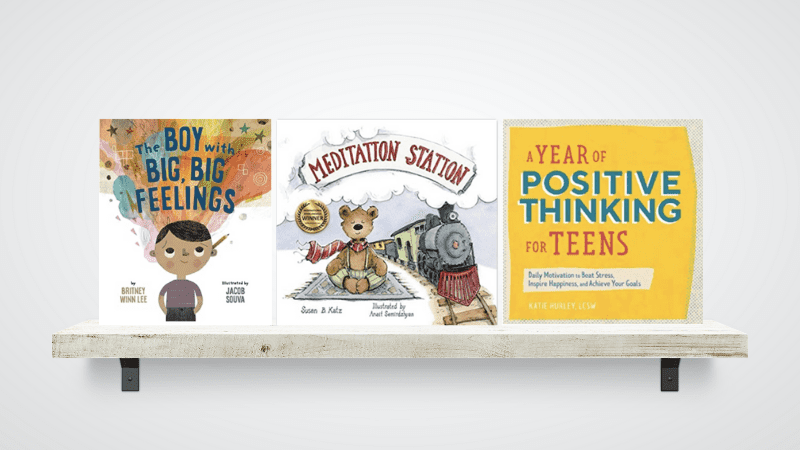
Mindfulness can be an abstract concept. Teach students what mindfulness is and what it looks like in our lives through read aloud.
Learn more: 15 Books To Teach Kids About Mindfulness
51. Make gratitude rocks
Either find rocks, or buy pre-smoothed ones, and have students paint rocks to express what they’re thankful for or something they care about. Create a garden or pathway using their finished rocks.
52. Gratitude journals
Add journaling to students’ day by asking students what they are thankful for and recording it during morning meeting. Or, add paper and pencils to the writing center and encourage students to write down what they are thankful for.
53. Go on a nature walk
Take students outside to indulge their five senses. Explore the changing color of leaves, different leaf shapes, pine cones, and more. Listen for birds and other critters. Lie down on the grass and feel the earth beneath you as you look up at the blue sky.
54. Practice progressive muscle relaxation
Most of us, including kids, aren’t always aware of the muscles in our body and how they feel or move. But we can all carry a lot of emotions in our physical bodies. Progressive muscle relaxation (PMR) is a coping skill and relaxation exercise that can help students calm their bodies by slowly tensing and relaxing their muscles one at a time.
55. Listen to music
It’s not too hard to tell when young students need a break or need a few minutes to recharge. And you know the old saying “Music soothes the savage beast.” Why not pop on this soothing video with gentle guitar music playing in the background for a few minutes? Music makes for fantastic social-emotional activities during snack time, as a brain break, or during transition times.
56. Sensory stations
Setting up sensory stations with water or sand is a great way to help students find calm again. Set up a water or sand table for students to use when they need to calm down.
57. Listen to a rain stick
There’s just something so soothing about the sound of a rain stick. First, practice listening to a rain stick by closing your eyes and playing a rain stick. Then, make your own that students can listen to when they feel overwhelmed.

